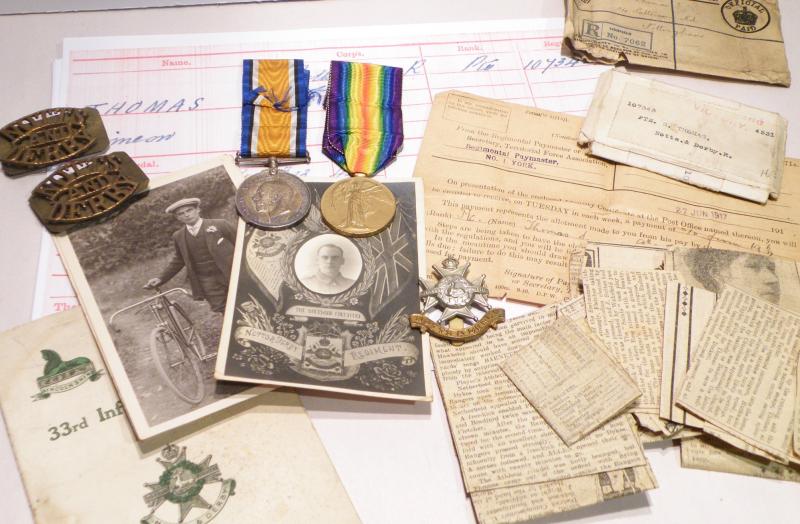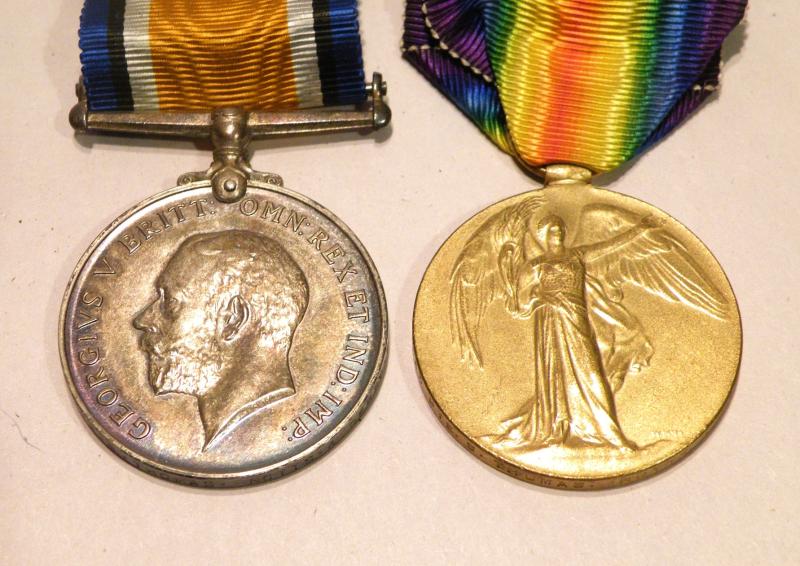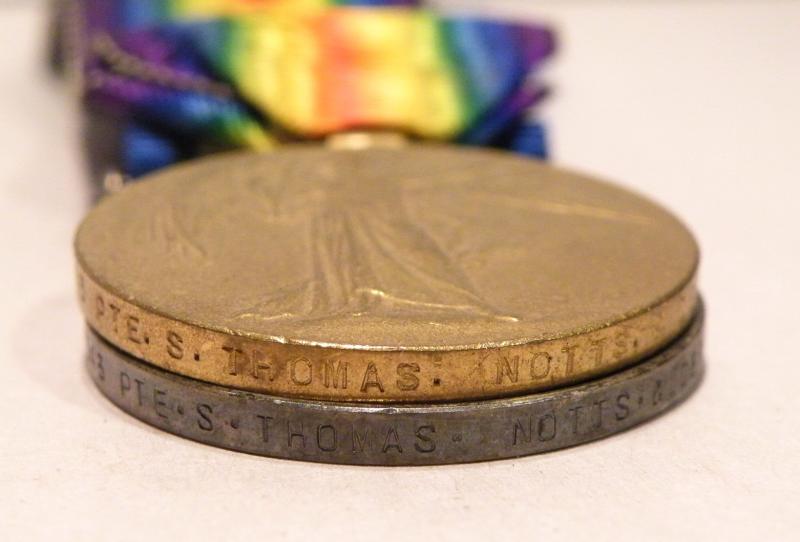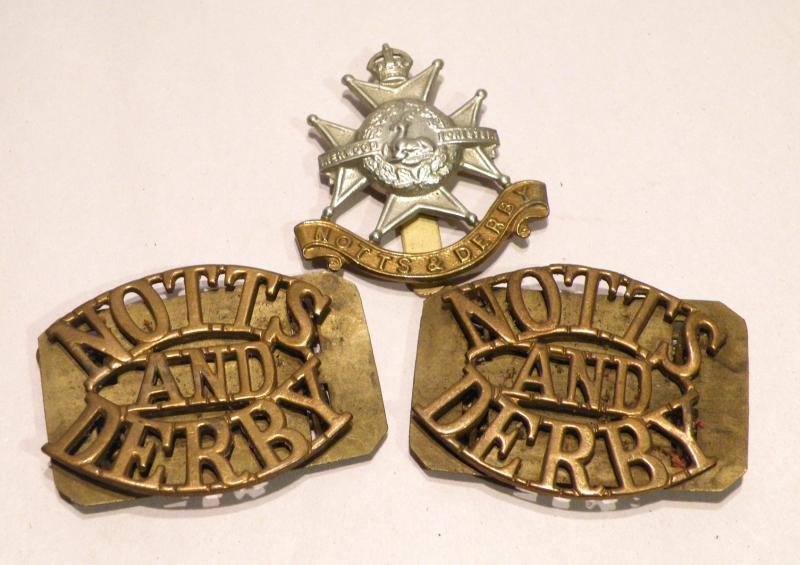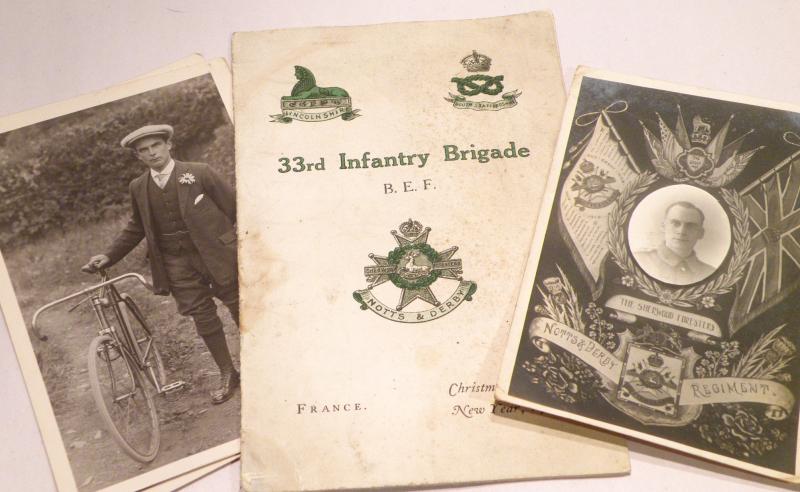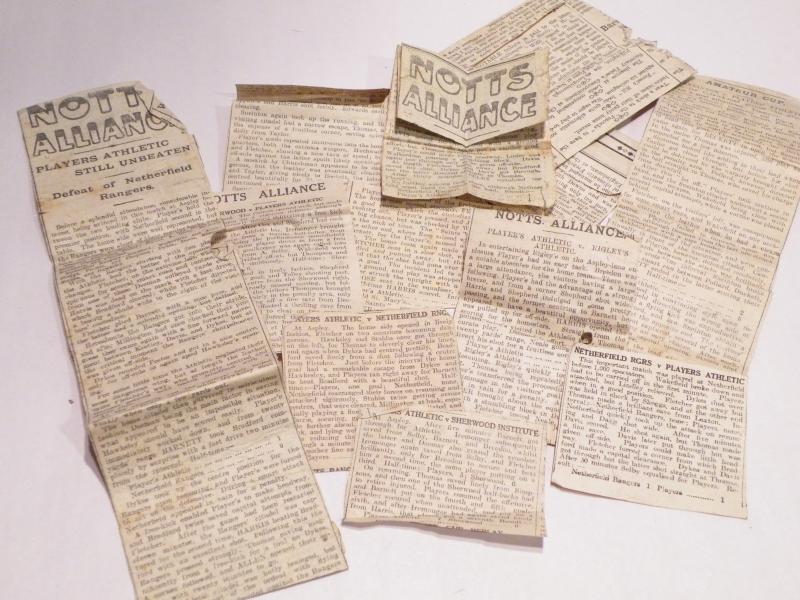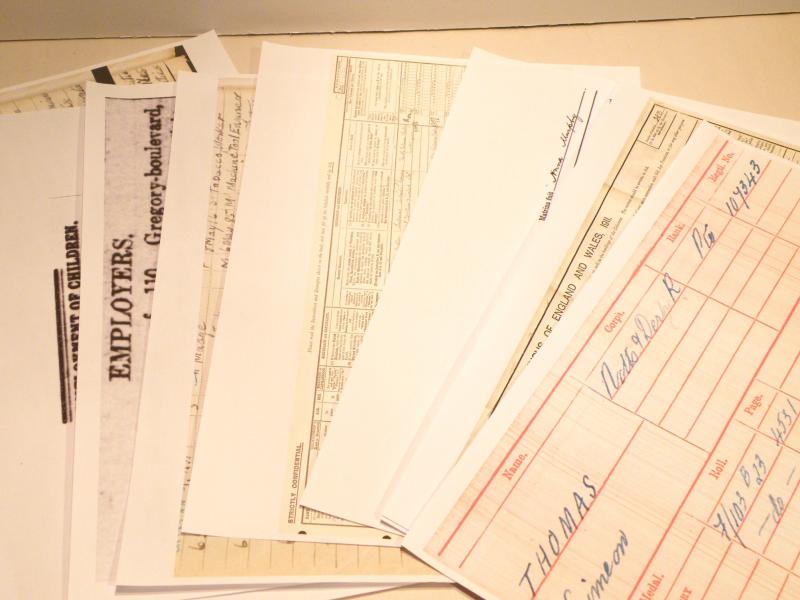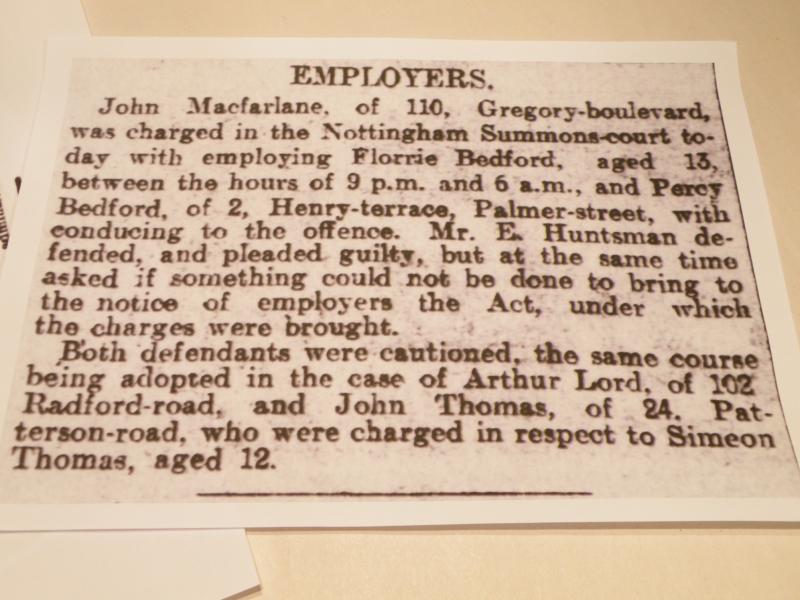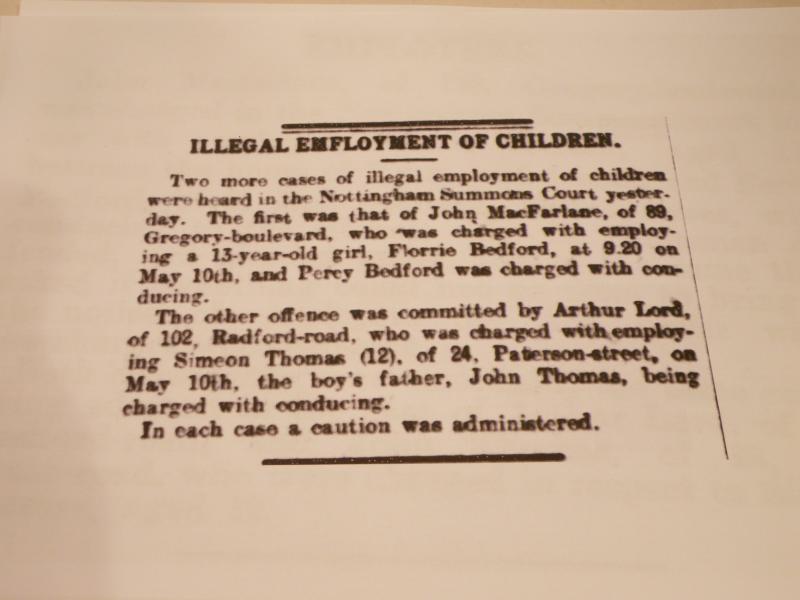WW1 Medal Pair to Thomas Notts & Derby Regiment.
A really interesting British War and Victory medal correctly named to 107343 private Simeon Thomas of the Notts & Derby regiment.
Simeon Thomas was born in Liverpool 1899 to his mother Mary and Father John and had two sisters Louisa and Lilly and two older brothers John and Charles, Simeon was the youngest child. At a young age the who family moved to Nottingham, his father working as a Tobacco Cutter in a Cigarette factory. Life was always hard for the working class of the early 20th century, and there was an incident around 1911when his father John, sent him to work for an Arthur Lord of 102 Radford Road Nottingham at the age of 12. Both his father and Arthur lord were charged in Nottingham Summons Court. When the first world war broke out in 1914, Simeon was a little too young to volunteer, so it wasn’t until 1916 he was able to enlist. He was attested into the 2nd/5th battalion Notts & Derby Regiment. He may have served in Ireland in 1916 during the Easter Uprising, but he would have been a part of the battalion sent to France in 1917 arriving Le Havre on the 26th of February 1917.
The battalion formed part of the 178th Brigade and joining the 59th (2nd North Midland) Division. On arrival they were put in pursuit of the German army east of the Somme before moving into the Cambrai front line at Havrincourt and Flesquieres. In June 1917 they moved for rest at Barastre shortly after they received orders to move by train from Acheux to Winnezeele, arriving 1st September.
On September 20th, the Division relieved the 55th (West Lancashire) Division after it had made an attack in the area of Gravenstafel. Assembling around Goldfish Chateau, just outside Ypres, the Division moved up into battle positions on the salient on the night of 23rd / 24th September to take part in the battle of the Menin Road Ridge and on the 26th to 30th of September at the battle of Polygon Wood, part of the third battle Ypres. Here the division suffered heavily sustaining over 2000 casualties. But there was little rest as the Battalion taking part in the capture of Bourlon Wood on the 28th of November. Almost like a tennis match during the battle of Cambrai, British forces initially captured the wood, then German counterattacks forced them to retreat from certain positions. It was constant attacks faced by German counter attacks, with the use of Stormtroopers, close quarter fighting constantly under intense artillery bombardments. It must have truly been hell. And the vast number of wounded and dead told the story for both sides.
After a well-earned and deserved rest and training the Division took over the front line at Bullecourt on 11th of February 1918, holding the line where the heaviest German attack fell, following a hurricane bombardment covered by a heavy morning mist. The battalions in front were driven from their defences and forced back through the village. The 176th and 178th Brigades were virtually destroyed, somehow Simeon survived. In May 1918 the shattered 59th Division was temporarily disbanded at Saint-Omer and its battalions and trench mortar batteries reduced to training cadres, the surplus men being drafted to other units, in Simeon’s case he was transferred to the 9th Battalion Notts & Derby Regiment, going on to fight at Arras and the battles for the Hindenburg line. Demobilisation began in January 1919 and ended in June 1919. Simeon returned home, how the survivors of such horrors adapted to home life, I don’t know, in the Great British way, they just had to carry on and that’s just whet Simeon did. After the war he went to work at the Players Cigarette factory and became a very active member of the Players Athletic football club, playing in the first division in the Notts Alliance league during the 1920’s winning the league title in several seasons, including 1922-23, 1923-24, 1925-26, 1926-27, and 1927-28. They also reached the final of the Nottinghamshire Senior Cup in 1925-26, finishing as runners-up to Mansfield Town. In this lot are a number of Newspaper cutting telling of Simeon Thomas’s football exploits.
In the 1939 register, Simeon and his Wife Ivy are still living in Nottingham and he is still working for a Cigarette manufacturing company. At some point, probably when he retired, he took up residence in Lowestoft Suffolk. Dying there in 1983 at the age of 84. All his memories of the Great War lost to time and his medals and effects kept in an old cigarette tin, which in a way is very appropriate. His effects include, his original medal issue box and registered envelope, medals, medal brown paper envelops, Army Pay Form, pair shoulder titles, cap badge and photographs, battalion Christmas card etc.
An amazing untouched lot, first time to market, which also includes, various copied paperwork, medal index card, medal roll, census, birth and death information. All in good used condition, medals, never worn and unpolished.
Code: 30823

